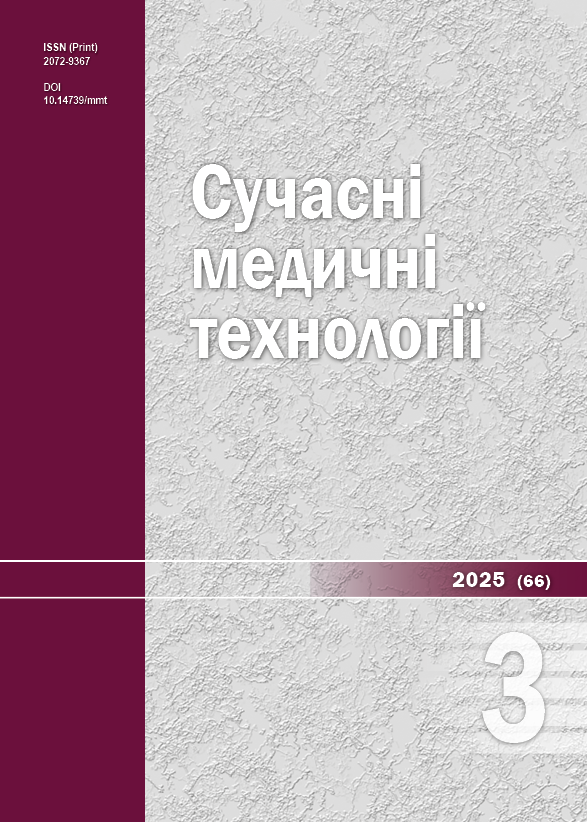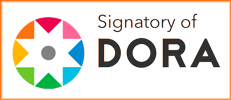Choosing a class IC antiarrhythmic drug for the treatment of patients without structural heart disease: clinical advantages of the most common agents (literature review)
DOI:
https://doi.org/10.14739/mmt.2025.3.336359Keywords:
anti-arrhythmia agents, class IC, ethacizine, propafenone, comparative characteristics, featuresAbstract
Aim: to analyze the pharmacological features and updated evidence-based medicine data of Class IC antiarrhythmic drug (AAD) ethacizine compared to propafenone to optimize the choice of treatment for cardiac arrhythmias in patients without structural heart disease.
Materials and methods. According to the purpose, a search was conducted for available scientific literature with an emphasis on publications of the last 5 years. We also analyzed scientific information on scientific platforms of the European Society of Cardiology (ESC 365) and the Association of Cardiologists of Ukraine.
Results. At first glance, Class IC AADs seem to be identical in the mechanism of action, which creates certain difficulties for practicing physicians when choosing AAD of this class for the treatment of arrhythmias in each specific case. Ethacizine and propafenone were chosen for comparison as the most frequently used Class IC AADs in our country. We presented data from studies comparing the efficacy and safety of the selected AADs with an emphasis on recent studies of ethacizine, as a less well-known AAD in Europe and globally. In addition, this article includes the main design features of new studies on real-world clinical use of Class IC AADs, including use as a “pill-in-the-pocket” for restoring sinus rhythm in patients with atrial fibrillation (ETERNITY study) and comparing the efficacy of propafenone and ethacizine in maintaining sinus rhythm in patients with paroxysmal and persistent forms of atrial fibrillation.
Conclusions. Propafenone and ethacizine have significant differences in pharmacological properties, specific contraindications, drug interactions, and evidence base, which can be considered to determine the optimal agent for a particular patient. The choice of the optimal Class IC AAD will depend on the presence and type of dysautonomia of the patient.
References
Merino JL, Tamargo J, Blomström-Lundqvist C, Boriani G, Crijns HJ, Dobrev D, et al. Practical compendium of antiarrhythmic drugs: a clinical consensus statement of the European Heart Rhythm Association of the European Society of Cardiology. Europace. 2025;27(8):euaf076. doi: https://doi.org/10.1093/europace/euaf076
Sydorova NM. [Antiarrhythmic Drug Classification Updates: The King’s Gambit for Researchers and Practitioners? Analytical literature review]. Current aspects of military medicine. 2021;28(2):214-36. Ukrainian. doi: https://doi.org/10.32751/2310-4910-2021-28-2-18
Taddei S, Tsabedze N, Tan RS. β-blockers are not all the same: pharmacologic similarities and differences, potential combinations and clinical implications. Curr Med Res Opin. 2024;40(sup1):15-23. doi: https://doi.org/10.1080/03007995.2024.2318058
Aronson JK. Changing beta-blockers in heart failure: when is a class not a class? Br J Gen Pract. 2008;58(551):387-9. doi: https://doi.org/10.3399/bjgp08X299317
Görenek B, Çalık AN, Kepez A, Öz A, Özmen Ç, Sinan ÜY, et al. Antiarrhythmic properties of beta blockers: Focus on nebivolol. Int J Cardiovasc Acad. 2024;10(2):22-30. doi: https://doi.org/10.4274/ijca.2024.85057
Antiperovitch P, Skanes A, Klein G, Tang A. Approach to a patient with asymptomatic pre-excitation. Heart. 2023;109(16):1254-9. doi: https://doi:10.1136/heartjnl-2022-321639
Chhabra L, Goyal A, Benham MD. Wolff-Parkinson-White Syndrome. [Updated 2023 Aug 7]. In: StatPearls [Internet]. Treasure Island (FL): StatPearls Publishing. Available from: https://www.ncbi.nlm.nih.gov/books/NBK554437
Van Gelder IC, Rienstra M, Bunting KV, Casado-Arroyo R, Caso V, Crijns HJ, et al. 2024 ESC Guidelines for the management of atrial fibrillation developed in collaboration with the European Association for Cardio-Thoracic Surgery (EACTS). Eur Heart J. 2024;45(36):3314-414. doi: https://doi.org/10.1093/eurheartj/ehae176. Erratum in: Eur Heart J. 2025:ehaf306. doi: https://doi.org/10.1093/eurheartj/ehaf306
Sydorova N. Class IC Antiarrhythmic Drugs: Informed Choice. Proc Latv Acad Sci Sect B Nat Exact Appl Sci. 2023;77(2):83-91. doi: https://doi.org/10.2478/prolas-2023-0012
Sydorova NM. [The use of ethacizine in up-to-date clinical practice in questions and answers: atrial fibrillation]. Ukrainskyi medychnyi chasopys. 2024;(1):23-8. Ukrainian. doi: https://doi.org/10.32471/umj.1680-3051.159.251731
Cardiac Arrhythmia Suppression Trial (CAST) Investigators. Preliminary report: effect of encainide and flecainide on mortality in a randomized trial of arrhythmia suppression after myocardial infarction. N Engl J Med. 1989;321(6):406-12. doi: https://doi.org/10.1056/NEJM198908103210629
Akiyama T, Pawitan Y, Greenberg H, Kuo CS, Reynolds-Haertle RA. Increased risk of death and cardiac arrest from encainide and flecainide in patients after non-Q-wave acute myocardial infarction in the Cardiac Arrhythmia Suppression Trial. CAST Investigators. Am J Cardiol. 1991;68(17):1551-5. doi: https://doi.org/10.1016/0002-9149(91)90308-8
Echt DS, Liebson PR, Mitchell LB, Peters RW, Obias-Manno D, Barker AH, Arensberg D, Baker A, Friedman L, Greene HL, et al. Mortality and morbidity in patients receiving encainide, flecainide, or placebo. The Cardiac Arrhythmia Suppression Trial. N Engl J Med. 1991;324(12):781-8. doi: https://doi.org/10.1056/NEJM199103213241201
Rosenshtraukh LV, Shugushev KK, Smetnev AS. Ethacizin: a new efficacious Soviet antiarrhythmic drug of the phenothiazine group. Am Heart J. 1986;112(5):932-9. doi: https://doi.org/10.1016/0002-8703(86)90303-0
Ratner EI, Baldenkov GN, Grigorian GY, Rosenshtraukh LV, Tkachuk VA. Moracizine and ethacizine effects on membrane receptors. Arzneimittelforschung. 1989;39(7):766-9.
Varon D, Rechavi M, Erez M, Goldberg G, Manoach M, Kaverina NV. Ethmozine and ethacizine--new antiarrhythmic drugs with defibrillating properties. J Basic Clin Physiol Pharmacol. 1993;4(4):299-311. doi: https://doi.org/10.1515/jbcpp.1993.4.4.299
Scamps F, Undrovinas A, Vassort G. Inhibition of ICa in single frog cardiac cells by quinidine, flecainide, ethmozin, and ethacizin. Am J Physiol. 1989;256(3 Pt 1):C549-59. doi: https://doi.org/10.1152/ajpcell.1989.256.3.C549
Ratner EI, Tkachuk VA, Baldenkov GN. Effect of moracizine and ethacizine on receptors of potential-operated calcium channels and calcium-binding proteins. Arzneimittelforschung. 1992;42(5):614-7.
Sydorova NM. "Videnskyi hambit 2025" dlia klasyfikatsii antyarytmichnykh zasobiv: yaki mozhlyvi vplyvy na shchodennu praktyku? [The "Vienna Gambit 2025" for the classification of antiarrhythmic drugs: what are the possible impacts on daily practice?]. Ukrainskyi medychnyi chasopys. 2025;(3):57-61. Ukrainian. doi: https://doi.org/10.32471/umj.1680-3051.266061
Brugada J, Katritsis DG, Arbelo E, Arribas F, Bax JJ, Blomström-Lundqvist C, et al. 2019 ESC Guidelines for the management of patients with supraventricular tachycardia. The Task Force for the management of patients with supraventricular tachycardia of the European Society of Cardiology (ESC). Eur Heart J. 2020;41(5):655-720. doi: https://doi.org/10.1093/eurheartj/ehz467. Erratum in: Eur Heart J. 2020;41(44):4258. doi: https://doi.org/10.1093/eurheartj/ehz827
Zeppenfeld K, Tfelt-Hansen J, de Riva M, Winkel BG, Behr ER, Blom NA, et al. ESC Scientific Document Group. 2022 ESC Guidelines for the management of patients with ventricular arrhythmias and the prevention of sudden cardiac death: Developed by the task force for the management of patients with ventricular arrhythmias and the prevention of sudden cardiac death of the European Society of Cardiology (ESC) Endorsed by the Association for European Paediatric and Congenital Cardiology (AEPC). Eur Heart J. 2022;43(40):3997-4126. doi: https://doi.org/10.1093/eurheartj/ehac262
Linz B, Thostrup AH, Saljic A, Rombouts K, Wirth K, Hohl M, et al. Pharmacological inhibition of acetylcholine-regulated potassium current (IK,ACh) and associated A1- and M2-pathways prevent atrial arrhythmogenic changes in a rat model for obstructive sleep apnea. Eur Heart J. 2020;41(Suppl 2):ehaa946.3701. doi: https://doi.org/10.1093/ehjci/ehaa946.3701
Linz B, Hertel JN, Sattler SM, Tfelt-Hansen J, Linz D, Jespersen T. Sympatho-vagal activation during obstructive respiratory events in pigs and blunted atrial arrhythmogenic effects by pharmacological IKACh-inhibition. 2022. Available from: Available from: https://esc365.escardio.org/presentation/246340
Piotrowski R, Baran J, Sikorska A, Krynski T, Kulakowski P. Cardioneuroablation for Reflex Syncope: Efficacy and Effects on Autonomic Cardiac Regulation-A Prospective Randomized Trial. JACC Clin Electrophysiol. 2023;9(1):85-95. doi: https://doi.org/10.1016/j.jacep.2022.08.011
Rebecchi M, De Ruvo E, Sgueglia M, Lavalle C, Canestrelli S, Politano A, et al. Atrial fibrillation and sympatho-vagal imbalance: from the choice of the antiarrhythmic treatment to patients with syncope and ganglionated plexi ablation. Eur Heart J Suppl. 2023;25(Suppl C):C1-C6. doi: https://doi.org/10.1093/eurheartjsupp/suad075
Han Y, Shao M, Yang H, Sun H, Sang W, Wang L, et al. Safety and efficacy of cardioneuroablation for vagal bradycardia in a single arm prospective study. Sci Rep. 2024;14(1):5926. doi: https://doi.org/10.1038/s41598-024-56651-9
Yeghiazarians Y, Jneid H, Tietjens JR, Redline S, Brown DL, El-Sherif N, et al. Obstructive Sleep Apnea and Cardiovascular Disease: A Scientific Statement From the American Heart Association. Circulation. 2021;144(3):e56-e67. doi: https://doi.org/10.1161/CIR.0000000000000988. Erratum in: Circulation. 2022;145(12):e775. doi: https://doi.org/10.1161/CIR.0000000000001043
Kokina B, Strēlnieks A, Pupkeviča I, Jubele K, Vikmane M, Sakne S, et al. Sinus rhythm maintenance after electrical cardioversion for Atrial fibrillation in high-risk patients - comparative efficacy of antiarrhythmic medications. Proc Latv Acad Sci Sect B Nat Exact Appl Sci. 2021;75(1):32-9. doi: https://doi.org/10.2478/prolas-2021-0006
Sokolova E, Ofrosimova P, Rudzitis A, Kalejs O. Exercise stress test in patient with persistent form of atrial fibrillation receiving treatment with Class Ic antiarrhythmic drugs after sinus rhythm restoration. In: International Research Conference on Medical and Health Care Sciences: Knowledge for use in Practice; 2021 Mar 24-26, Riga, Latvia. Riga Stradins University, Riga, p. 134. Available from: https://science.rsu.lv/en/publications/exercise-stress-test-in-patient-with-persistent-form-of-atrial-fi
Sokolova E, Strelnieks A, Kokina B, Rudzitis A, Lejnieks A, Kalejs O. Inotropic function of myocardium in patients with persistent form of atrial fibrillation receiving antiarrhythmic drugs class Ic. In: International Research Conference on Medical and Health Care Sciences: Knowledge for use in Practice; 2021 Mar 24-26, Riga, Latvia. Riga Stradins University, Riga, p. 138. Available from: https://science.rsu.lv/en/publications/inotropic-function-of-myocardium-in-patients-with-persistent-form
Kuridze N, Etsadashvili K, Minadze E. A prospective analysis of the efficacy and safety of ethacizine during premature atrial contractions and premature ventricular contractions. Eur Heart J. 2024;45(Suppl 1):ehae666.3318. doi: https://doi.org/10.1093/eurheartj/ehae666.3318
Sychov OS, Romanova O, Romanov V. [Results of the clinical study "Evaluation of the effectiveness and safety of the use of the drug etacizin for chronic treatment and rhythm restoration according to the "pill in pocket" scheme in patients with hypertension and paroxysmal of atrial fibrillation"]. Arytmolohiia. 2025;(1):36-49. Ukrainian.
Sydorova NM. [Rationale and design of the study "Ethacizine Evaluation for acute and chronic treatment of aRial fibrillatioN in real practice: UkraInian NaTional surveY" (ETERNITY)]. Current Aspects of Military Medicine. 2025;(1):195-207. Ukrainian. doi: https://doi.org/10.32751/2310-4910-2025-32-1-15
Sokolova E, Rudzitis A, Kalejs O, Lejnieks A. The many NO's to the use of class I antiarrhythmics: does this also apply to ethacizinum?. Europace. 2025;27(Suppl 1):euaf085.083. doi: https://doi.org/10.1093/europace/euaf085.083
Downloads
Additional Files
Published
How to Cite
Issue
Section
License
Copyright (c) 2025 N. M. Sydorova, M. Yu. Kolesnyk

This work is licensed under a Creative Commons Attribution-NonCommercial 4.0 International License.
The work is provided under the terms of the Public Offer and of Creative Commons Attribution-NonCommercial 4.0 International (CC BY-NC 4.0). This license allows an unlimited number of persons to reproduce and share the Licensed Material in all media and formats. Any use of the Licensed Material shall contain an identification of its Creator(s) and must be for non-commercial purposes only.














